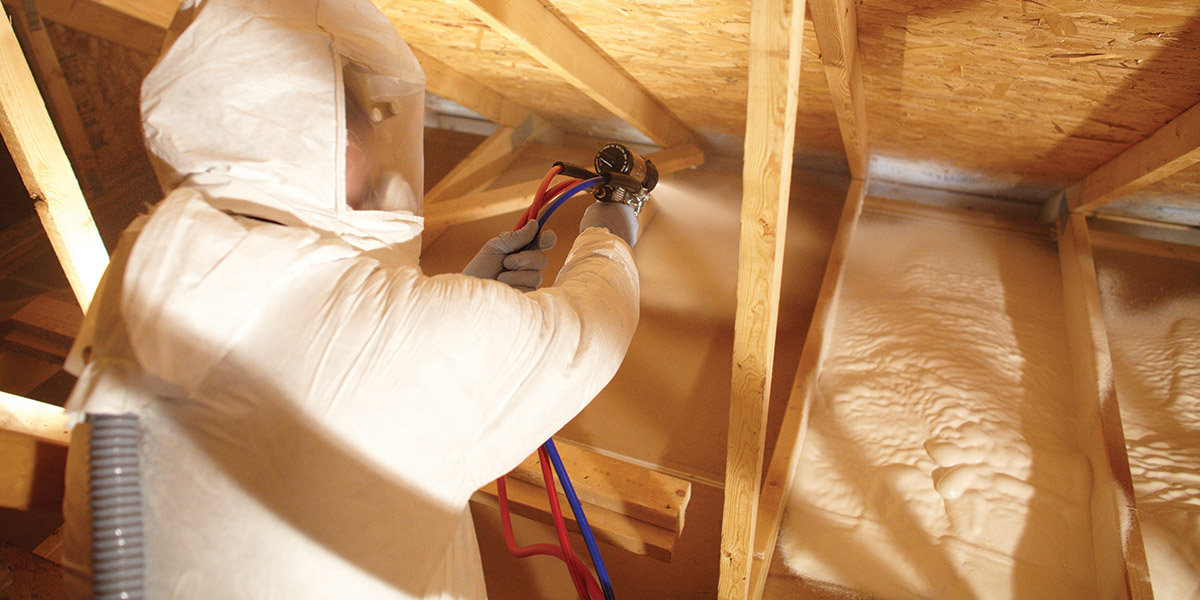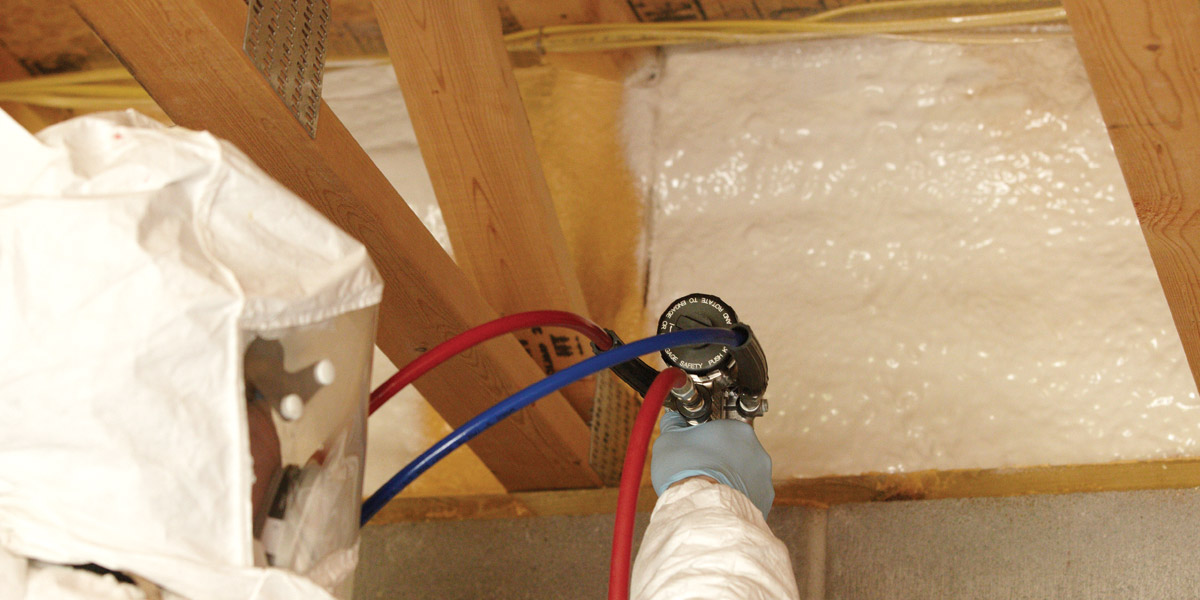Insulating Attics and Rim Joists with Spray Foam Insulation
The Importance Of Insulating Attics And Rim Joists
Spray Polyurethane Foam Seals And Insulates
Builders have long recognised the importance of well-insulated spaces, particularly attics and rim joists. These areas are critical to maximising a building’s comfort and energy efficiency by reducing inflows of cold and hot air.
Closed cell spray polyurethane foam (SPF) is an excellent choice for insulating attics and rim joists. Closed cell SPF is an effective thermal, air, moisture and vapour barrier. When properly applied to a thickness of one inch or more, spray foam insulation is an effective air barrier, preventing air leakage that creates draughty conditions and reduces energy efficiency.
113 million single family homes in the United States used SPF for insulation, Americans could save up to $33 billion in energy costs each year.1
Insulating Attics
During the winter, as warm air rises and leaks out of the attic, outside air is pulled into a home at lower levels to replace the exiting air, resulting in drafts and reducing comfort for occupants. In summer, the process is reversed as heavier, cooler air sinks to the lower level, and is replaced by warm air entering through the attic.
As warm air escapes in winter or cool air escapes in summer, energy is required to heat or cool the entering air. This causes the heating, ventilation and air conditioning (HVAC) system to work longer and harder to maintain the building’s internal temperature.

R-values for SPF typically vary from 3.5 to 7.0 per 25.4 mm (one inch) of thickness. When used to insulate attics, SPF prevents air leakage, improves energy efficiency and enables builders to install smaller HVAC systems in new homes. SPF attic insulation can also act as a sound barrier.
Sealing air leaks in the attic also minimises humidity and moisture from condensation that can occur due to air intrusion. This condensation can result in mildew and mould, and potentially cause surrounding wood surfaces to rot and decay.
SPF expands when it is applied, forming a continuous air barrier that prevents air leaks. Applying SPF directly to the underside of the roof and interior attic walls provides maximum air sealing and energy efficiency.
Insulating Rim Joists
The rim joist is the board that is placed on end on top of the sill plate. This is where the foundation meets the exterior wall just above ground level.
Properly insulating the rim joist is one of the best ways to improve a home’s energy efficiency and comfort. If the rim joist is uninsulated, only that piece of wood prevents warm air intrusion in summer and cold air intrusion in winter.
Allergens, dust, dust mites, mould spores and pollen can also enter a home here through tiny cracks and crevices, plus ants, spiders and other insect pests. Fibreglass does a poor job of sealing airflow and, particularly, tiny cracks and gaps.
Fibreglass insulation has typically been used for this purpose and can easily be placed between the floor joists. But unless there’s a good moisture barrier, as warm moist air contacts the rim joist, moisture will condense behind the fibreglass at the rear of the cavity.

SPF is better suited than fibreglass to insulate rim joists, because it insulates and seals air leaks and prevents water intrusion. As SPF is applied, it expands to seal cracks and gaps, preventing condensation from forming on the rim joist and protecting the home from mould and rot that can result from condensation.
In some areas, building codes require an approved thermal barrier material to be installed between the SPF and the interior occupied space. Always be aware of local building codes before applying SPF to insulate attics, rim joists and other areas.
Insulating and sealing a home’s attic and rim joist using SPF is a smart decision. SPF increases energy efficiency and comfort by reducing drafts and exterior noise, prevents moisture intrusion, as well as the resulting mould and mildew.
References
1. Savings based on estimates from the American Chemistry Council Economic Department using 2013 industry data.






